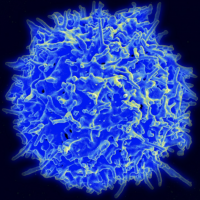To Port, or Not to Port?
Starting a new thread since this is more of a specific question...My wife just started ABVD. My cousin, a RN who worked an oncology/treatment floor for a year plus, had asked if my wife would get a PICC or a Port...she explained what was meant by using a central line versus standard IV and also the pros and cons of the Picc vs Port. (If my wife had to chose, it would def be a Port rather than PICC).
Anyway, she's being treated at Sloan Kettering, one of the best in bizz! And they told us that generally, and especially for AVBD, they do a standard IV. They said the nurse are excellent at finding strong veins, would check constantly throughout the treatment to make sure the vein was hold up, and that they only do a Port if the veins start failing. They also said that risk of infection (by using a Port) outwieghs the risk of losing a vein and therefore they suggest the normal IV.
This leads to a number of questions.
1) Is it fair that perhaps SK really is that good (borderline arrogant) to not go with a Port
2) is it really just a very rare occurance that a vein would actually crap out
3) is it that her treatment schedule (AVBD, once every two weeks) is infrequent enough to not worry
4) Is the procedure for installing (and removing) the Port very invasive? I read that removing the Port can be quite painful.
Comments
-
Port
Get a port ! I am shocked that SK does not require it.
A port is massivley easier on the patient overall, and much safer also. Many chemo drugs are vesicants -- "blister agents." They cause massive burning and tissue death if spilled.
I have never heard anyone mention that port removal was painful. I'm sure someone at some time had issues, but it is rare. Removing mine took about 15 minutes.
The first-ever chemo drug was developed in 1942...Mustargen....derived directly from Mustard Gas, the chemical warfare agent. Interestingly enough in a collaboration between SKCC, Yale, and the Army. And it was derived for Lymphoma. Small world (see the Wiki link below).
My cancer center would not administer a vesicant drug to a patient without a port. Period.
(In ABVD, Adriamycin and Vinblastine are both vesicants; in CHOP, Adriamycin and Vincristine are vesicants.)
max
0 -
Port, definitely!
I second all that Max has already said: a port is safer (in that it protects the small veins in the arms and reduces the risk for extravasation) and ensures a more "comfortable" infusion experience. However, I do personally know two cancer patients who have found it even more painful to have it removed than to have it put in place.
Perhaps the medical team at Sloan Kettering consider that the chances of any serious problem arising from treatment are statistically low enough for your wife to get through it without a port...
I know that I couldn't have done without it, having fragile veins and a relapse-prone disease.
PBL
0 -
My 2 Ports
When my blood counts dropped after my first chemo, I became very sick. I was hospitalized for 2 weeks. My port was infected with staph that went into my blood stream and I became septic. It was touch and go for a few days. The port was surgically removed and I was left with a gaping hole in my chest which my husband attended every day.
Even after that dramatic experience, I chose to have another port placed for my remaining treatments. I had no trouble with the second port, which I named "Lucky". But I was very protective of it. I only allowed it to be accessed for chemo--never for blood draws or contrast for scans. I insisted that the nurse wear mask and gloves to access it.
After 7 chemo and 2 years of Rituxan maintenance, I could not wait to get that thing out of me. Although I never had any problems, I was nervous about it the entire time it was there.
I had it removed in the surgeon's office with a local anesthetic in only a few minutes. She closed the incision with strips and I drove myself home. I never experienced any discomfort that a tylenol couldn't handle.
In my observations and experience, I believe it is the nurses that really push for ports. It makes their job so much easier. And it is nice to have arms free during hours of infusion.
Best,
Rocquie
0 -
Ports
Hi EB303, I can not tell you how happy I have been with my port. Which by the way has been in use since Nov. 2009. I have received chemo both as an IV and with a port and much prefer the port by one thousand percent. I use the port for all blood draws, Rituxan, chemo and ct scans. But have always gone to the infusion certer to be accessed, not allowing anyone but chemo nurses to access. I first received chemo for BC in 1992/1993 and my veins were damaged by the caustic drugs.
Good luck with your decission and treatments.
0 -
PORT
The vein in my left arm gave out before I got my port. I know it saved the vein in my right arm. I finished my Rituxan maintenance in Oct but I sitll have the port. I've gotten attached to it because it makes the blood draws in the Oncologist office so much easier. When I see her in January I'll find out what the plan is going forward. I have a feeling I'll being having it out some time after that.
0 -
Port
My experience with a port has been easy. I was in hospital for 6 rounds of R-Epoch and numerous blood draws. I am finished and in remisson(Yay) and will find out when my port is to be removed tomorrow. I have heard removal is easier ( putting it in was out patient surgery not difficult at all) but will report.
0
Discussion Boards
- All Discussion Boards
- 6 CSN Information
- 6 Welcome to CSN
- 122K Cancer specific
- 2.8K Anal Cancer
- 446 Bladder Cancer
- 309 Bone Cancers
- 1.6K Brain Cancer
- 28.5K Breast Cancer
- 398 Childhood Cancers
- 27.9K Colorectal Cancer
- 4.6K Esophageal Cancer
- 1.2K Gynecological Cancers (other than ovarian and uterine)
- 13K Head and Neck Cancer
- 6.4K Kidney Cancer
- 673 Leukemia
- 794 Liver Cancer
- 4.1K Lung Cancer
- 5.1K Lymphoma (Hodgkin and Non-Hodgkin)
- 238 Multiple Myeloma
- 7.2K Ovarian Cancer
- 63 Pancreatic Cancer
- 487 Peritoneal Cancer
- 5.5K Prostate Cancer
- 1.2K Rare and Other Cancers
- 543 Sarcoma
- 736 Skin Cancer
- 657 Stomach Cancer
- 192 Testicular Cancer
- 1.5K Thyroid Cancer
- 5.9K Uterine/Endometrial Cancer
- 6.3K Lifestyle Discussion Boards




